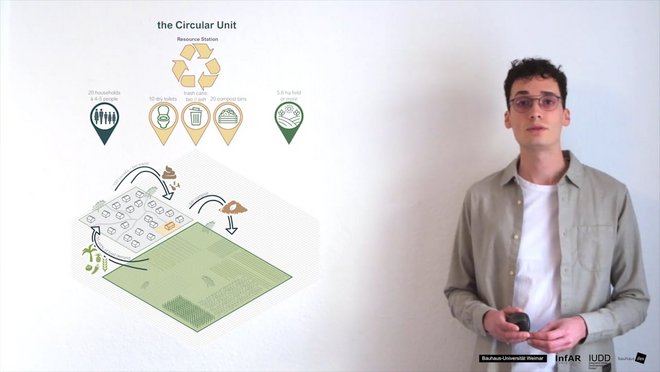
Nutrient-Cycle-Based City
Master Thesis by Magnus Heilmann
Study Programme Integrated Urban Development & Design
2021
In this Master Thesis Magnus Heilmann uses parametric modeling to investigate possibilities of a circular nutrient flow for emerging cities in Ethiopia.

Nutrient-Cycle-Based City - Magnus Heilmann (IUDD Master Thesis, 2021)
Click the Play button to load and view external content from Vimeo.com.
Automatically load and view external content from Vimeo.com (You can change this setting at any time via our »Data protection policy«.)
Agriculture in low-income economies of SubSaharan Africa is facing multi-layered challenges: climate change threats, land degradation and unfertile soils, lack of knowledge and financial resources, all leading to low crop production and food insecurity. Urban and rural settlements at the same time often lack access to safe sanitation due to the rapidly growing population.
Traditional treatment schemes of wastewater, where in place, are expensive, polluting, and fail to recognize human excreta as the valuable resource that it is by simply disposing it. The use of dry toilets that collect human excreta for composting addresses all these issues at once: providing people with safe and affordable access to ecological sanitation, fertilizing fields, stabilizing soils, sustainable intensification of agriculture, food security, preventing pollution and ecological damage through pathogens and chemicals. These dry toilets are the key which can close the nutrient cycle in agriculture. This research therefore proposes the “Nutrient-Cycle-Based City“, an integrated urban development model applying circular urbanism principles.
Theoretical and spatial models provide guidance for the implementation of dry toilets and composting facilities in rural and urban spaces in Ethiopia. Using parametric design methods, the proposed design strategy of the “Circular Unit“ is tested on the site of Olonkomi, Ethiopia. The flexibility and applicability of the bottom-up urban development scheme is shown through different spatial implementation scenarios.

